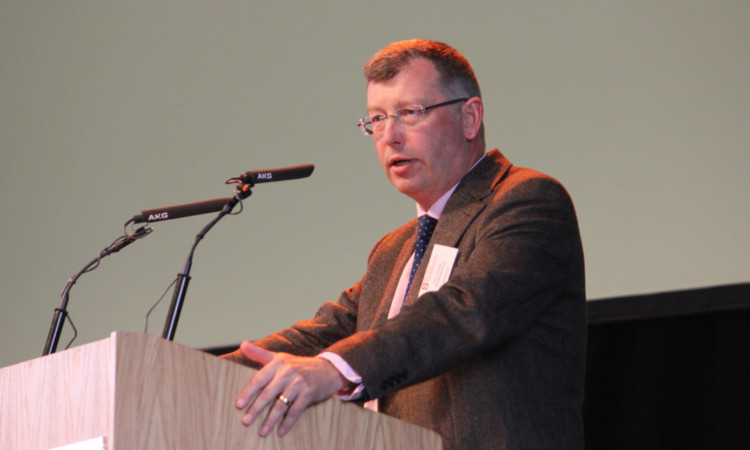The potential threat of a land reform-induced land grab is considerably stifling the availability of agricultural tenancies on Scotland’s privately owned land and estates.
The revelation has emerged with the results of independent research carried out by the representative body of Scotland’s landowners, Scottish Land & Estates (SL&E), examining the economic role landlords play in support of the rural economy.
Almost 50% of land and estate owners identifying the key challenges and barriers to economic progression to the future cited land reform and political uncertainty as the greatest risk moving forwards.
“It is no surprise to find that this subject was causing concern and uncertainty to estate owners and managers,” director of Rural Solutions Rob Hindle, who led the study, told a packed room of SL&E members and spring conference delegates at the Assembly Rooms in Edinburgh yesterday.
Although there was no specific line of inquiry introducing the subject, he said the issue repeatedly surfaced when landowners were asked what is currently influencing their management decisions and investment opportunities.
“We were told again and again that one big issue is land tenure, with many estates opting to take and keep land in hand,” said Mr Hindle.
Responding to the survey and related interview process, one estate owner said: “We’ve taken more land in hand in the last 18 months . . .The antics of the Scottish Parliament and the Government leaves me with no confidence in them . . . If we get the opportunity to get more in hand that is what we will do. One would like to be creating opportunities for people of talent and drive who want to go into the industry, but you can’t do that.”
Mr Hindle said similar responses also indicated land reform is blocking investment in land and infrastructure where there is a full agricultural tenancy, as this is increasingly seen as an area of high risk.
“If you invest a sum of money and it’s a secured tenancy, immediately that capital sum is devalued because there’s a sitting tenant who could purchase it at a discounted rate,” one landowner said.
Another responded: “I’ve got three farms coming back in hand this year and I will grass park probably and just see what happens.”
Providing the keynote speech for the conference, focusing on the rural economy, Finance Secretary John Swinney was pressed to explain the Scottish Government stance regarding Scottish land ownership.
Asked if he could give any assurance to the members of SL&E that there will not be some kind of land grab on the horizon, he said the land reform process and Agricultural Holdings Review Group are both high on the political agenda.
“Both of these processes are taking their course,” he said. “They are by no means concluded, and whatever they come up with will be the subject of consultation going forwards.
“I know that SL&E have been very active in the process of dialogue around these questions and they have participated fully in the process. The Government will obviously host a very active debate around any further issues that are raised.”
Conceding the issue is “enormously emotive” for a great number of people, he admitted that for estate owners it will be a case of “just waiting to see what comes out of the review process”.
Mr Swinney’s guarded response comes in light of a recent comment by the Minister for Environment and Climate Change Paul Wheelhouse, who said he doubted anyone would design a system such as that in Scotland where “you end up with only 432 people owning half the private land”.
